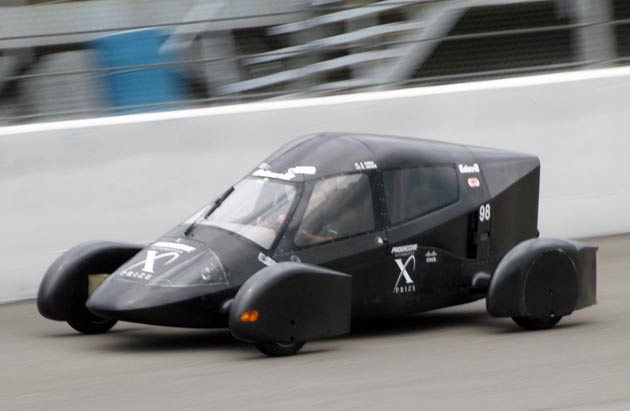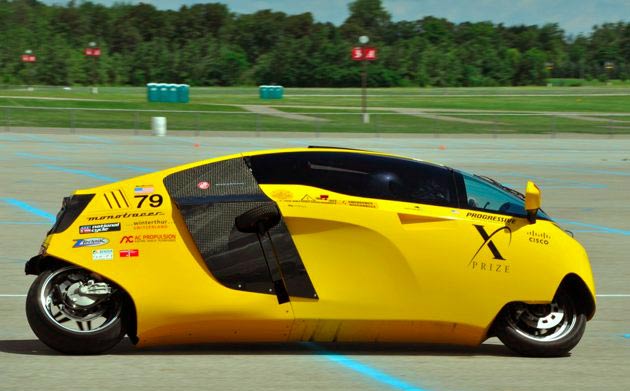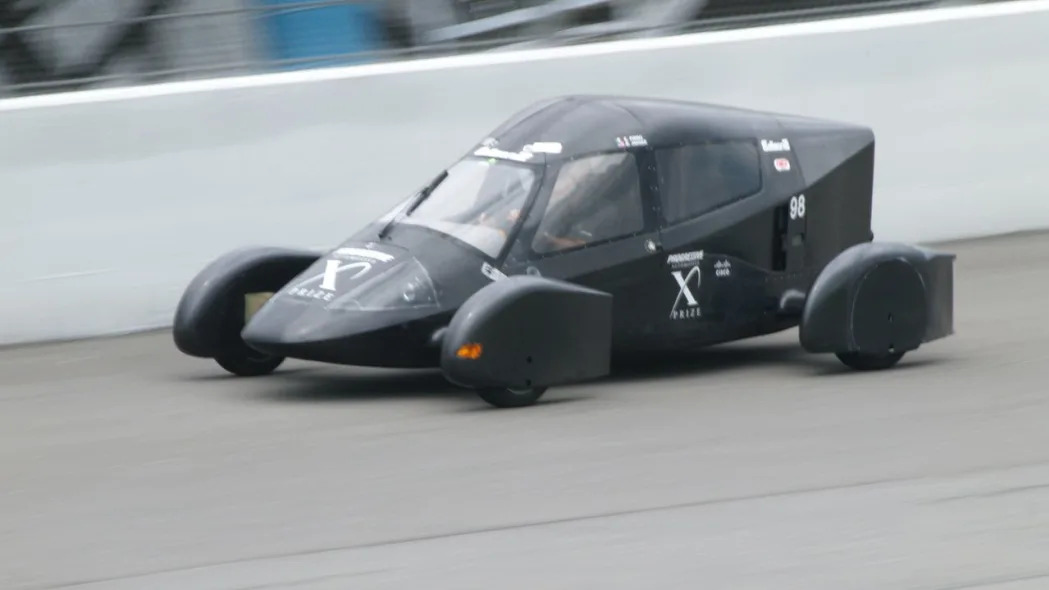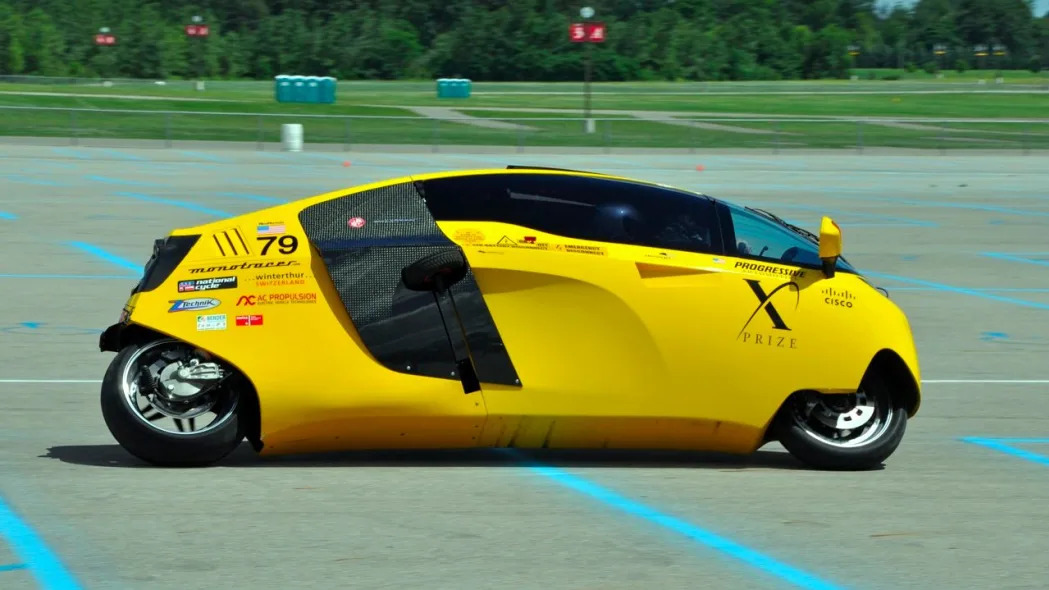What Did The X-Prize Achieve?
It took the $25,000 Orteig Prize, as much as the promise of fame and glory, to convince Charles Lindbergh to risk a solo 1927 flight across the Atlantic. Three-quarters of a century later the $10 million Ansari X-Prize spurred the launch of SpaceShipOne, the first privately-funded manned spaceflight.
So, when the Progressive Insurance Auto X-Prize was announced, at the New York Auto Show, several years ago, there was plenty of reason to be excited. And the promise of the project only seemed to increase when fuel prices hit their 2008 peak and the national mindset started to shift steadily more and more in favor of alternative propulsion.
But now that organizers have announced the three winners that will share a significant $10 million purse, I am left wondering what the Auto X-Prize actually achieved and whether it came anywhere near its lofty goals.
Paul A. Eisenstein is Publisher of TheDetroitBureau.com, and a 30-year veteran of the automotive beat. His editorials bring his unique perspective and deep understanding of the auto world to Autoblog readers on a regular basis.
They can be summed up elegantly, the organization explaining that the Auto X-Prize was designed to "inspire a new generation of viable, safe and super fuel-efficient vehicles." There are plenty of potentially breakthrough products and technologies lying hidden in automotive research labs around the world. The key, for the Auto X-Prize, was the promise of actually delivering to us vehicles not only hyper-efficient but that could meet some basic customer demands: they had to be safe and affordable, as well.
And here's perhaps the most intriguing mandate: participants had to prove they could not only build the vehicles they entered but lay out a viable business plan for bringing them to market. Those last hurdles sank more than a few of the 136 vehicles initially entered into the Progressive Insurance Auto X-Prize by 111 different teams.
Perhaps a few of those entries shouldn't have been washed out, like Amp, an Ohio-based electric vehicle maker whose battery conversion of a Saturn Sky roadster fell a few miles short of the 100-mile range target. On the other hand, Amp wasn't ready in time with a 150-mile version of the Chevy Equinox, which, incidentally, it will soon be bringing to market.
In hindsight, one of the organizers admitted to me in an off-the-record aside, barring the Electric Equinox was a big mistake. It might have given the competition an extra dose of credibility that the winners seem to be lacking.
It certainly didn't help, that source admitted, that the "mainstream" category quickly came down to a competition of one – and a vehicle, at that, which makes the description more than a stretch.

It took the $25,000 Orteig Prize, as much as the promise of fame and glory, to convince Charles Lindbergh to risk a solo 1927 flight across the Atlantic. Three-quarters of a century later the $10 million Ansari X-Prize spurred the launch of SpaceShipOne, the first privately-funded manned spaceflight.
So, when the Progressive Insurance Auto X-Prize was announced, at the New York Auto Show, several years ago, there was plenty of reason to be excited. And the promise of the project only seemed to increase when fuel prices hit their 2008 peak and the national mindset started to shift steadily more and more in favor of alternative propulsion.
But now that organizers have announced the three winners that will share a significant $10 million purse, I am left wondering what the Auto X-Prize actually achieved and whether it came anywhere near its lofty goals.
Paul A. Eisenstein is Publisher of TheDetroitBureau.com, and a 30-year veteran of the automotive beat. His editorials bring his unique perspective and deep understanding of the auto world to Autoblog readers on a regular basis.
They can be summed up elegantly, the organization explaining that the Auto X-Prize was designed to "inspire a new generation of viable, safe and super fuel-efficient vehicles." There are plenty of potentially breakthrough products and technologies lying hidden in automotive research labs around the world. The key, for the Auto X-Prize, was the promise of actually delivering to us vehicles not only hyper-efficient but that could meet some basic customer demands: they had to be safe and affordable, as well.
And here's perhaps the most intriguing mandate: participants had to prove they could not only build the vehicles they entered but lay out a viable business plan for bringing them to market. Those last hurdles sank more than a few of the 136 vehicles initially entered into the Progressive Insurance Auto X-Prize by 111 different teams.
Perhaps a few of those entries shouldn't have been washed out, like Amp, an Ohio-based electric vehicle maker whose battery conversion of a Saturn Sky roadster fell a few miles short of the 100-mile range target. On the other hand, Amp wasn't ready in time with a 150-mile version of the Chevy Equinox, which, incidentally, it will soon be bringing to market.
In hindsight, one of the organizers admitted to me in an off-the-record aside, barring the Electric Equinox was a big mistake. It might have given the competition an extra dose of credibility that the winners seem to be lacking.
It certainly didn't help, that source admitted, that the "mainstream" category quickly came down to a competition of one – and a vehicle, at that, which makes the description more than a stretch.

The top $5 million award went to the Edison2 team for their Very Light Car #86. Technically intriguing at every level, it uses a downsized engine and advanced materials to bring its total mass down to a featherweight 830 pounds, impressive for what is billed as a four-seater. Slick aerodynamics, meanwhile, helped boost its fuel economy to over 100 mpg.
But the design looks more like something out of a science-fiction movie than anything you'd really expect to see in a showroom anytime soon, especially with those Formula One-style out-board wheels. The only car to try that in recent memory was the old Plymouth Prowler, and to little success.
But compared to the X-Tracer, the VLC does seem positively mainstream.
Just trying to figure out how to get into this Swiss-made 2-wheeler is a major challenge. A tandem 2-seater that's really little more than a modified motorcycle, the X-Tracer requires some serious training to make it work, and it just barely slipped through the rules.

It is a more elegant design than the BMW motorcycle offering of a few years back that incorporated a roof-like contraption that allowed you to ride without a helmet. But can we imagine a highway full of X-Tracers? Not a chance.
Unfortunately, if the only goal of the Progressive Insurance Auto X-Prize was to foster an array of advanced, high-mileage vehicles that could soon flood into showrooms, the competition will have fallen flat on its face.
That's not to say it was a failure. It's one thing to encourage a Lone Eagle to fly across the Atlantic or even get a few adventurous entrepreneurs to try to ride a roman candle into the exosphere. Transforming the auto industry is an entirely different matter.
More realistic is the goal of Eric Cahill, one of the senior executives with the Auto X-Prize, who says he hopes the competition will "help accelerate the pace of change."
As with the Orteig and Ansari competitions, the Auto X-Prize did tap a sense of restless entrepreneurship, 111 teams looking for ways to address one of the key issues of our era. But, with a growing consensus that U.S. fuel economy standards must hit 50 to 60 mpg by 2025, it won't be the easy answers that will save the auto industry. It will take – pardon the cliché – plenty of out-of-the-box ideas. No, not a production VLC or X-Tracer, but some of the concepts and components that helped them win the $10 million competition.
If the X-Prize ultimately yields a few sound ideas for lightening tomorrow's vehicles, making powertrains more efficient and improving aerodynamics, well, it will have proved worthwhile despite the hype.
Paul A. Eisenstein is Publisher of TheDetroitBureau.com, and a 30-year veteran of the automotive beat. His editorials bring his unique perspective and deep understanding of the auto world to Autoblog readers on a regular basis.




Sign in to post
Please sign in to leave a comment.
Continue